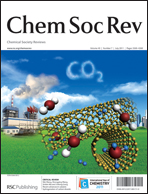Strategies for in vivo imaging of enzyme activity: an overview and recent advances
Abstract
Imaging of enzyme activity in living subjects promises many applications in both basic and translational researches from helping elucidate the enzyme function and mechanism in biology to better disease detection and monitoring, but the complexity and dynamics of enzymatic reactions in living systems present unique challenges for probe design. This critical review examines the approaches in recent literature to in vivo imaging of the activity of a variety of enzyme targets with an emphasis on the chemical perspective of probe design, structure and function. Strategies for designing enzyme-activated probes based on a variety of molecular scaffolds including small molecules, organic and


 Please wait while we load your content...
Please wait while we load your content...